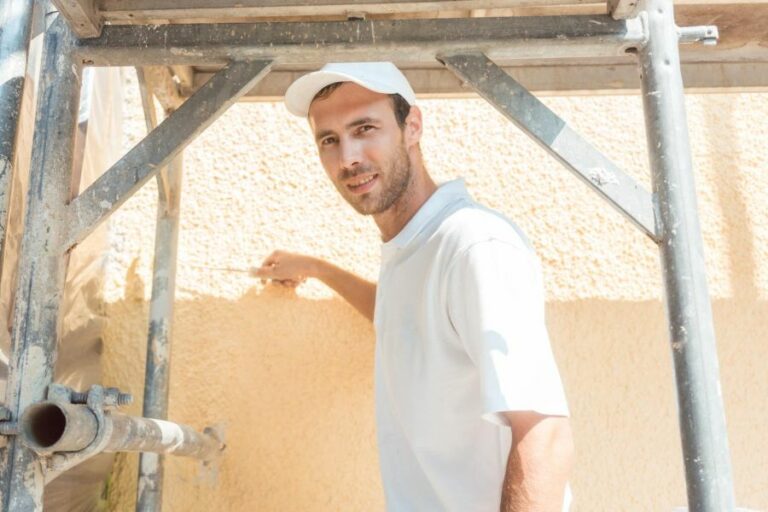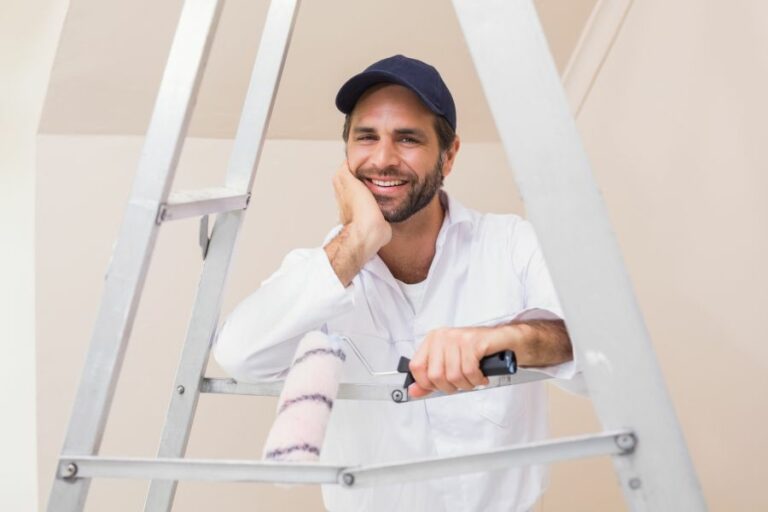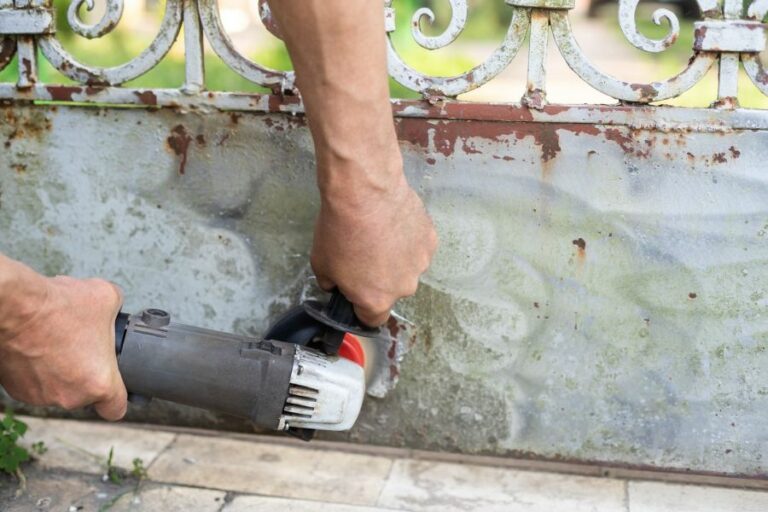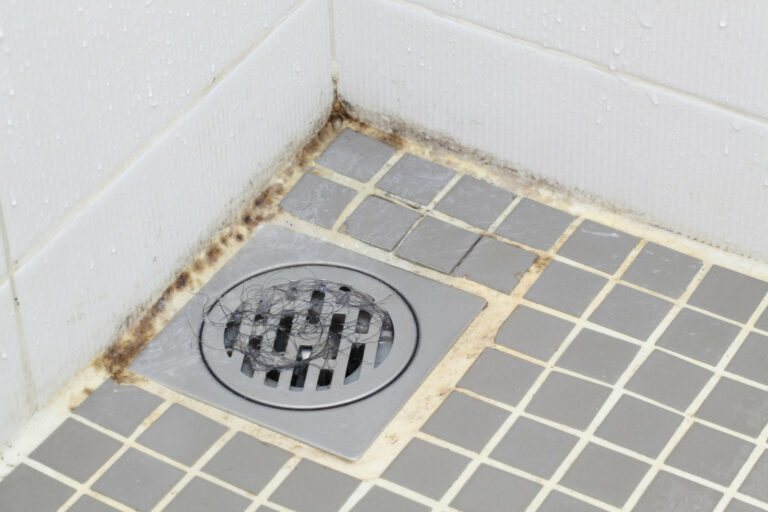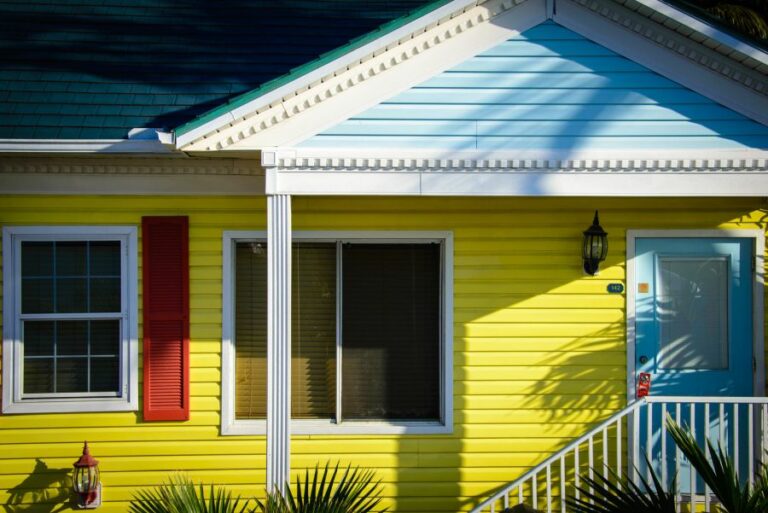Historic Building Surface Prep Problems And Fixes
Have you ever faced challenges when trying to prepare the surface of a historic building for restoration or maintenance? Well, you’re not alone. Many professionals and building owners alike encounter unique issues while working on these beautiful structures. The good news is that we’ve got the solutions you need to tackle these problems with ease and ensure your building’s history remains preserved!
Historic building surface prep problems and fixes:
Historic building surface preparation problems include moisture intrusion, masonry cleaning, lead-based paint, patching and repair, and paint removal. Fixes involve effective waterproofing, gentle cleaning methods, certified lead-safe practices, matching original materials for repairs, and cautious paint removal techniques, all aimed at preserving the structure’s integrity and historical value.

As an old building tells its story, there are challenges in preserving its beauty. Keep reading to uncover common surface prep problems and learn the valuable tips and fixes to restore historic structures to their former glory. Allow us to guide you through this architectural adventure.
Contents
- 1 Addressing Surface Preparation Issues in Historic Structures
- 2 Techniques for Painting Heritage Buildings
- 3 The Debate: Should All Historic Buildings Be Conserved?
- 4 The Rising Importance of Old Building Restoration and Preservation
- 5 Sustainable Development: Reviving Historic and Abandoned Buildings vs. New Construction
Addressing Surface Preparation Issues in Historic Structures
• Introduction
Ensuring proper surface preparation is crucial when working with historic buildings. It not only maintains the building’s structural integrity but also preserves its historical value.
However, dealing with historic buildings often means encountering unique challenges, ranging from delicate and aging materials to complex architectural details.
• Moisture-Related Issues
– Problem
One of the most common challenges faced in historic buildings is moisture intrusion. Prolonged exposure to moisture can lead to various issues, such as mold, rotting wood, and compromised structural elements.
– Solution
To address moisture-related issues, it is essential to implement effective waterproofing measures, which may include:
- Repairing or replacing damaged roof material and flashing
- Re-pointing masonry to address cracked or deteriorated mortar joints
- Installing gutters and downspouts to divert water away from the building
- Applying a breathable, water-repellent treatment to external surfaces
In cases of excessive dampness within the building, dehumidifiers can help reduce moisture levels. For more information on moisture control, you can refer to the National Park Service’s guide on this issue.
• Masonry Cleaning
– Problem
Cleaning the masonry exterior of a historic building can be a delicate process. Using inappropriate cleaning methods may cause irreparable damage to the materials, such as etching, staining, or unintentional removal of the patina.
– Solution
When it comes to masonry cleaning, less is often more. In most cases, a low-pressure water wash (<100 psi) is sufficient for cleaning purposes. If necessary, use a soft bristle brush to scrub the surface gently.
Avoid using aggressive methods like sand- or soda-blasting, as they can damage the original materials. In some cases, chemical cleaners may be necessary, but their use should be limited, and they should be selected carefully, keeping the building material in mind.
• Dealing with Lead-Based Paint
– Problem
Historic buildings often contain lead-based paint, which can pose significant health risks if disturbed. Therefore, special care must be taken when removing or abating such paint to minimize potential lead exposure.
– Solution
Lead paint removal should be handled by professionals trained and certified in lead-safe work practices. Techniques like wet scraping, wet sanding, and confined space work are essential to minimize lead dust dispersion.
Additionally, following the EPA’s guidelines for lead-safe work practices is crucial to maintain proper safety standards.
• Patching and Repair
– Problem
Repairs, replacements, and patching are inevitable in the restoration process. However, using incorrect materials or techniques can lead to irreversible damage that detracts from the historic building’s character.
– Solution
When patching or repairing historic buildings, it is important to use materials that closely match the original in composition, color, and texture. This approach ensures that new elements blend seamlessly with the existing structure and supports long-term compatibility.
Additionally, it is important to stay conservative when replacing damaged elements, preserving as much of the original materials as possible.
• Paint Removal
– Problem
Paint removal is often necessary for historic buildings, whether to address deteriorated paint or to restore the original appearance. However, removing paint from delicate surfaces like wood or plaster can be challenging, as improper techniques can cause damage.
– Solution
Paint removal techniques vary depending on the substrate, but some recommended methods include:
- For wood surfaces: Infrared paint removers, steam strippers, or gentle chemical stripping techniques
- For plaster surfaces: Applying a paint-softening agent and gently scrape with flexible spatulas
In both cases, exercise caution when using these methods, and always test on a small, inconspicuous area before proceeding with the entire surface.
• Conclusion
Restoring historic buildings comes with a unique set of challenges, and proper surface preparation is crucial in maintaining the structure’s integrity and historical value.
By understanding common problems and their solutions, professionals and enthusiasts alike can ensure that restoration projects progress smoothly, preserving these precious architectural gems for future generations to appreciate.
Problem | Fix |
|---|---|
Peeling paint | Remove loose paint, sand the surface, apply primer, and repaint |
Deteriorating masonry | Clean and repair the damaged areas, then apply a compatible and breathable masonry sealer |
Mold and mildew | Clean affected areas with a mold-killing solution, let dry and repaint with a mildew-resistant paint |
Water damage | Fix the source of the water leak, remove damaged materials, dry the area, and repair or replace the damaged surface |
Efflorescence (white powdery substance) on masonry surfaces | Remove efflorescence with a stiff brush and water, then apply a sealer specifically designed for masonry surfaces |
Rusting metal surfaces | Remove rust with a wire brush, sand the surface, apply a rust inhibitor, and repaint with a rust-resistant paint |
Failing adhesion of paint on wood surfaces | Remove loose paint, sand the surface, apply a high-quality primer, and repaint with a quality paint appropriate for wood surfaces |
Techniques for Painting Heritage Buildings
• Understanding the Importance of Preservation
Before beginning the process of painting a historic building, it is essential to understand the significance of preserving these structures.
Restoring historic buildings enables future generations to appreciate the unique features and history that they represent.
Proper care and attention must be given to ensure that the original materials and architectural features are preserved while still providing an aesthetically pleasing finish.
Check out this helpful guide from the National Park Service for more information on the importance of preservation and best practices to follow when painting historic buildings.
• Selecting the Right Paint
Selecting the right type of paint is crucial to ensure the longevity and overall appearance of a historic building. Traditional paints, such as linseed oil-based paints or lime wash, can provide a more authentic appearance while also offering breathability for the building materials.
Modern acrylic-latex paints may offer durability but may not allow historical materials to breathe as effectively. Be sure to research the most appropriate paint type for the specific building materials of your project.
– Considerations for Color Selection
When choosing a color for a historic building, it is recommended to conduct research on the original color scheme of the structure. Historical societies and local archives can provide valuable information and resources to help guide your decision.
The chosen color should not only be historically accurate but also fitting for the building’s architectural style and surroundings.
• Preparing the Surface for Painting
Preparing the surface for painting is a critical step in ensuring a successful and long-lasting result. Incorrectly prepped surfaces can lead to paint failure, causing peeling, cracking, or blistering, ultimately resulting in the need for more frequent maintenance.
– Cleaning the Surface
The first step in preparing the surface for painting is properly cleaning the building. Dirt, grime, and loose paint should be carefully removed through gentle methods, such as a low-pressure water wash or soft-bristle brush.
Avoid using abrasive techniques like sandblasting, as this can cause irreversible damage to historic materials.
– Assessing and Repairing Damage
Once the building is clean, carefully inspect the surface for any structural damage, such as wood rot, cracks, or deteriorating masonry. It is essential to address these issues before painting to ensure that the surface is stable and the paint will adhere properly.
For wood surfaces, remove any rotting or damaged wood and replace it with a suitable alternative before applying a wood stabilizer. Similarly, for masonry surfaces, repair any cracks or imperfections using appropriate materials and techniques, taking care to match the existing mortar and texture.
– Priming the Surface
Priming the surface creates an even and stable base for the paint to adhere to, ensuring a long-lasting and durable finish. Choose a primer compatible with the selected paint type, and ensure that it is applied to a clean and dry surface.
Depending on the condition of the building, several coats of primer may be necessary to achieve an even and professional finish.
• Application Techniques for Historic Buildings
The method and technique of painting historic buildings can significantly influence the final result. Improper application techniques can lead to an inadequate finish, resulting in a need for more frequent maintenance or even damage to the building materials.
– Brush and Roller Application
Brush and roller application techniques are most suitable for historic buildings, allowing for better control and precision than a spray application.
High-quality brushes with natural bristles are recommended, as they provide an even distribution of paint and are less likely to cause brush marks or streaks. Rollers with a dense foam cover, rather than a textured nap, are also ideal for a smooth finish on historic buildings.
– Spray Application
While spray application is generally not recommended for historic buildings, it may be suitable for certain situations, such as large, flat surfaces without intricate detailing.
If opting for spray application, be cautious of overspray and ensure that the paint is applied in a controlled manner without causing drips or runs.
• Maintaining a Painted Historic Building
Regular maintenance is essential for preserving the quality and appearance of a painted historic building. Inspect the building annually to assess the state of the paint, addressing any areas of paint failure promptly.
This proactive approach will not only preserve the beauty and authenticity of the structure but also minimize the need for more extensive repairs and repainting in the future.
In conclusion, painting historic buildings requires careful consideration, planning, and execution to ensure that these structures are preserved for future generations to appreciate.
By taking the time to research and choose appropriate materials, prepare the surface correctly, and apply the paint with care, the result will be not only visually appealing but also long-lasting and respectful of the building’s original character.
Step | Description |
|---|---|
1 | Research the building’s history and original paint colors |
2 | Choose appropriate paint materials, considering factors such as the building’s age, architecture, and historical significance |
3 | Clean and repair the building’s surfaces, taking care not to cause damage |
4 | Apply a suitable primer to the surface, ensuring proper adhesion |
5 | Choose historically accurate colors for the paint, based on your research |
6 | Apply the paint using appropriate techniques and tools, such as brushes, rollers, and sprayers |
7 | Allow the paint to dry fully, following the manufacturer’s recommendations |
8 | Inspect the final result and make any necessary touch-ups |
The Debate: Should All Historic Buildings Be Conserved?
The preservation of historic buildings has been a topic of discussion for a long time. Some argue that these structures represent our history and culture and must be protected at all costs. Others believe that, in some cases, it might be more beneficial to make way for modern development.
• The Case for Preserving Historic Buildings
– Cultural and Historical Significance
Historical buildings serve as tangible links to our past, providing insight into the life and times of earlier generations. They offer a way to connect with our cultural and historical heritage.
By preserving these structures, we’re not just maintaining a physical building; we’re safeguarding an essential part of our identity. The National Trust for Historic Preservation states that “these places of our past shape our sense of identity” and play a vital role in fostering a sense of community and belonging.
– Architectural and Artistic Merit
Historic buildings often showcase unique architectural styles, designs, and craftsmanship that may not exist in modern construction. Additionally, they can serve as important sources of inspiration for architects and designers today.
The preservation of these structures allows us to appreciate and learn from the achievements of previous generations in the fields of art and architecture.
– Economic Benefits
Historic buildings can also contribute to local economies through tourism, job creation, and property value appreciation. As landmarks and attractions, these structures often draw tourists, boosting local businesses and generating revenue.
Studies have shown that historic district designation can lead to increased property values, as people find charm and cultural significance in these areas.
• The Case Against Preserving Historic Buildings
– Cost and Feasibility
One of the main arguments against preserving historic structures is the massive financial burden it can place on communities and governments. Restoration projects can be expensive, requiring specialized skills and materials.
Furthermore, maintaining and upkeeping these buildings can consume a significant portion of a municipality’s budget.
As some structures age, they may also pose safety risks, and the cost of renovation to meet modern safety standards can make preservation unfeasible.
In cases where the cost of preservation vastly outweighs the benefits, it may be more practical to document the building’s history and importance before moving forward with redevelopment.
– Obstructing Progress
In some scenarios, the presence of historic buildings can hinder urban development efforts, such as creating affordable housing or necessary infrastructure. When the need for modern amenities or space becomes pressing, preserving a historic structure might prove to be an obstacle to progress.
• Striking a Balance
Given the various factors to consider, it’s clear that not all historic buildings can or should be preserved. However, a balanced approach can help communities and governments determine which structures hold significant value and deserve protection. The following recommendations aim to guide these decisions.
– Assess the Significance of the Building
Before deciding to preserve or demolish a historic building, it’s crucial to evaluate its cultural, historical, architectural, and economic significance.
The National Register of Historic Places provides guidelines to assist in identifying and documenting buildings with notable value. Municipalities should use these criteria when assessing the potential impact of demolition or preservation on the community.
– Encourage Adaptive Reuse
Rather than discarding historic buildings, communities can explore adaptive reuse, which involves repurposing these structures for modern needs while maintaining their historic fabric.
This strategy maintains cultural significance while ensuring that the building remains functional and economically viable.
– Encourage Public-Private Partnerships
Engaging in public-private partnerships can help to secure funding for the preservation and maintenance of historic buildings. Governments can offer financial incentives, such as grants or tax credits, for private entities willing to invest in preserving these structures.
This approach can reduce the financial burden on the public sector and promote sustainable development.
– Educate and Engage the Community
To foster public support for preservation efforts, it’s essential to educate communities on the importance and value of historic buildings.
Encouraging citizen participation in preservation projects and decision-making processes can lead to a greater appreciation for these structures and better-informed decisions on their future.
In conclusion, the preservation of historic buildings is a complex issue that requires a careful balance of cultural, economic, and practical considerations.
By adopting a thoughtful approach, we can ensure that these structures continue to enrich our lives while also promoting progress and development within our communities.
The Rising Importance of Old Building Restoration and Preservation
• Importance of Preservation
In recent years, a growing concern for the restoration and preservation of historic buildings has gained traction around the world.
Preserving old buildings allows communities to maintain a connection with their past, as well as protect architectural heritage for future generations. The restoration process also contributes to urban revitalization and sustainable development.
One prominent organization that deals with the preservation of old buildings is the United Nations Educational, Scientific, and Cultural Organization (UNESCO), which is responsible for designating and protecting World Heritage Sites.
• Architectural Heritage and Identity
Historic buildings are a tangible connection to a city or region’s past. They provide a physical representation of the cultural and social development of a community, sharing the stories and lessons of previous generations.
By preserving these structures, we are valuing the architectural heritage connected to our collective identity.
• Environmental Sustainability
Preservation and restoration of old buildings are increasingly seen as environmentally sustainable practices. The construction industry is a major contributor to waste and environmental degradation.
By restoring existing buildings rather than demolishing them to build anew, we can repurpose materials, reduce waste, and minimize our carbon footprint.
Efforts to adapt old buildings to modern needs and energy efficiency standards can further promote sustainable development.
Retrofitting historic structures with modern systems, such as solar panels or energy-efficient windows, can help reduce energy consumption while maintaining their architectural gems.
• Economic Benefits
Investing in the restoration of old buildings can contribute to the economic development of a community. Real estate value typically increases in areas that maintain historic districts or buildings.
Preserving these structures can attract tourists, create a vibrant cultural environment, and encourage investment in the surrounding areas.
Additionally, restoration projects tend to generate more jobs than new construction projects, which usually involve the use of prefabricated materials.
Restorations require skilled workers, such as craftsmen and artisan tradespeople, leading to growth in local employment and spending.
• Legal Protection and Policy Development
To support the restoration and preservation of old buildings, many countries have implemented legal frameworks or policies.
Initiatives such as providing tax incentives for preservation projects or creating local agencies dedicated to protecting and maintaining historic sites can help facilitate the process.
However, enforcement and funding of these policies vary worldwide, and more work is needed to establish stronger frameworks to ensure the continuing conservation of historic structures.
• Challenges in Preservation
– Technological Advancements
One challenge in preserving historic structures is integrating modern technology while maintaining their authentic appearance. Balancing the need for energy efficiency, safety, and accessibility with the desire to protect a building’s historic character can be difficult.
Technological innovations and creative problem-solving can help achieve this delicate balance.
– Funding
The cost of restoration and preservation projects can be high, deterring potential investors or making it difficult for owners to maintain their properties. Providing financial incentives, creative financing options, or grants for preservation projects can help overcome this challenge.
– Competing Interests
Urban development often prioritizes new construction over preservation, sometimes due to the increased profit margins for developers. Stronger legal protection and financial incentives for historic buildings can help counteract this trend.
• Recommendations for Successful Preservation
- Collaboration: Bringing together stakeholders from different sectors, such as local government, business owners, and preservation organizations, can create a comprehensive preservation strategy, ensuring the conservation of historic buildings.
- Education: Raising awareness about the importance of preserving our architectural heritage and its benefits can encourage individuals and communities to engage in conservation activities.
- Incentives: Providing financial and legal incentives can influence the decision-making process of individuals and businesses, making preservation a more appealing option when weighing the costs and benefits.
- Technological Solutions: Embracing innovative technological techniques can help overcome the challenges of integrating modern systems into historic structures.
In conclusion, the growing concern for the restoration and preservation of historic structures can bring meaningful cultural, environmental, and economic benefits.
As a global community, it is our responsibility to ensure the protection of these architectural treasures for generations to come.
By working collaboratively and embracing innovative solutions, we can create a sustainable future that values our shared past.
Sustainable Development: Reviving Historic and Abandoned Buildings vs. New Construction
• Preserving the Heritage, Saving the Environment
Environmentally sustainable design, or green building, is an approach to building design that emphasizes reducing a project’s environmental impact.
Developing historic and abandoned buildings can be more sustainable and eco-friendly than constructing new buildings.
– Adaptive Reuse: A Sustainable Solution
Adaptive reuse is the process of redeveloping existing buildings for new uses while preserving their historical or cultural value.
This approach has several advantages that make it more sustainable than constructing a new building. Here are three main reasons:
- Resource Conservation: Developing historic and abandoned buildings helps conserve natural resources, as it requires fewer materials than new construction. According to a study by the National Trust for Historic Preservation, the environmental benefits of reusing an existing building generally outweigh the advantages of building a new, more energy-efficient structure. This is because constructing a new building consumes more energy, raw materials and generates higher greenhouse gas emissions.
- Energy Efficiency: Adaptive reuse can often result in more energy-efficient buildings compared to their newly constructed counterparts. This is due to two factors embodied energy and operating energy. Embodied energy is the total energy used to produce, transport, and assemble building materials. Since historic buildings have already expended embodied energy, reusing them means no additional energy input. Operating energy, on the other hand, refers to the energy required for heating, cooling, and lighting a building. Many historic structures were designed to maximize natural light and ventilation, making them inherently energy-efficient. Additionally, upgrading these buildings with modern technologies can further enhance their energy performance.
- Cultural Preservation: Preserving historic and culturally significant buildings can have social and economic benefits. It helps maintain a connection to our past, promotes a sense of community, and fosters cultural identity. Moreover, rehabilitating historic structures can generate jobs, increase property values, and support local economies through tourism.
– Techniques for Sustainable Historic Building Development
Developing historic and abandoned buildings sustainably involves strategies that maintain or enhance the original structure’s integrity while incorporating modern technologies for energy efficiency, water use reduction, and improved indoor air quality. Some key techniques include:
- Improving Insulation: To reduce heat loss and improve energy efficiency, it is essential to add insulation to the walls, floors, and roofs. However, care must be taken to use non-invasive insulation materials that do not cause damage to the historic fabric.
- Sealing Air Leaks: Air leaks can account for a significant amount of heat loss in a building. Sealing these leaks will make the structure more energy-efficient and comfortable.
- Upgrading Windows: Old, single-glazed windows can be upgraded with double-glazed or energy-efficient glass to reduce heat loss.
- Installing Energy-Efficient Lighting: Swapping traditional incandescent bulbs with energy-efficient LED or CFL lighting helps cut down on electricity consumption.
- Incorporating Renewable Energy Sources: Adding solar panels or wind turbines to historic buildings can provide clean energy and contribute towards reducing the facility’s carbon footprint.
– Challenges of Developing Historic Buildings
Though repurposing historic and abandoned buildings is a sustainable approach, it comes with several challenges, such as:
- Structural Integrity: Older buildings may require significant structural repairs or reinforcements to ensure they are safe and stable.
- Preservation Guidelines: Historic structures often have strict preservation guidelines that dictate the types of renovations or upgrades that can be carried out.
- Initial Cost: The redevelopment of historic buildings may require a higher initial investment compared to new construction, particularly when significant structural repairs and upgrades are involved.
However, despite these challenges, the long-term benefits of developing historic structures, such as resource conservation, energy efficiency, and cultural preservation, often outweigh the initial costs and limitations.
• Conclusion
Developing historic and abandoned buildings can be an effective, sustainable alternative to new construction.
By embracing the principles of adaptive reuse, we can conserve resources, minimize environmental impact, preserve architectural heritage, and create vibrant, sustainable communities.
To achieve this, it is essential to work with experienced preservationists, architects, and engineers who understand the importance of balancing sustainability goals with the preservation of historic features.

